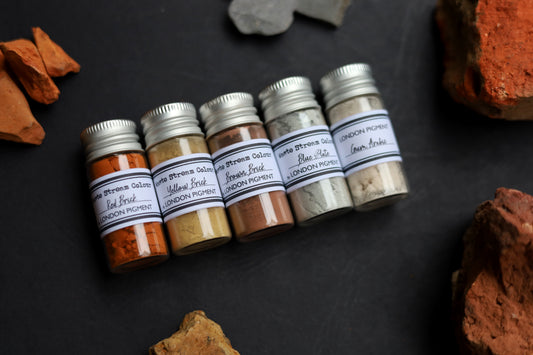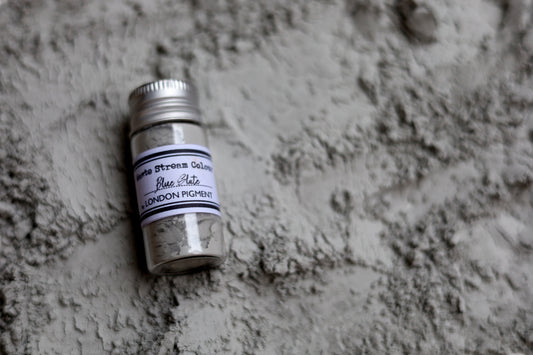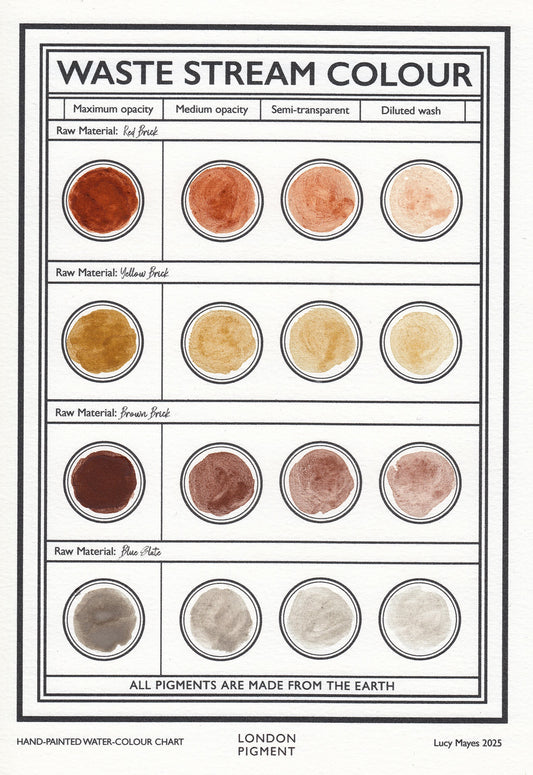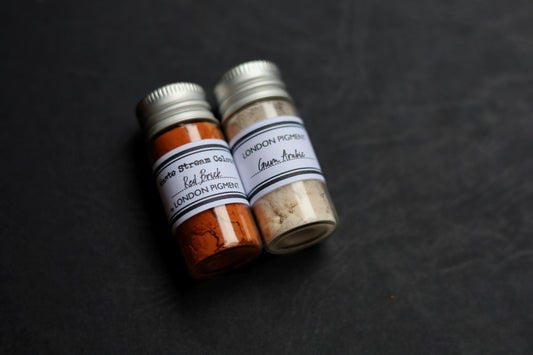Paintings
These paintings are made with handmade watercolour on archival board. This ongoing series references historical colour charts (commercial and those linked to various 19th & 20th century art movements). Historical paintings that deal chiefly with colour theory and demonstrate the properties of particular colours alongside geometric forms are also influences. In remaking these motifs with handmade pigments and hand-collected binders from London and other sites within the U.K the original chart's use is altered. These new pigments usurp the originals, that are often made with toxic colours (made of heavy metals like cobalt and cadmium pigments) and are replaced with waste stream, plant-based or earth pigments.

A walk along the Thames 2020, Materials: clockwise from top centre- Mudlark verdigris, Georgian yellow brick, London red brick, carbon black, brown brick, London iron oxide, London clay, charcoal, medieval clay tile, copper carbonate, brown-violet brick, victorian clay pipe, gum Arabic on archival watercolour paper, 2021.








Waste Stream Colour Products
-
Waste Stream Watercolour Complete Set
Regular price From £70.00 GBPRegular priceUnit price per -
Blue Slate Pigment
Regular price £15.00 GBPRegular priceUnit price per -
Waste Stream Colour Chart
Regular price £15.00 GBPRegular priceUnit price per -
Waste Stream Watercolour Duo Set
Regular price £30.00 GBPRegular priceUnit price per



